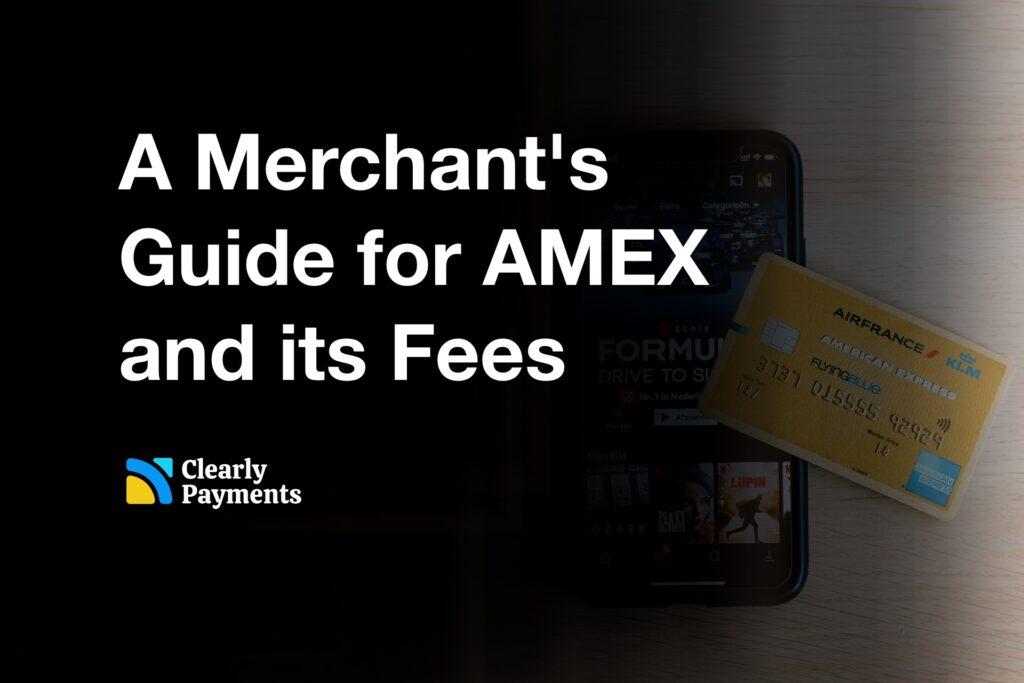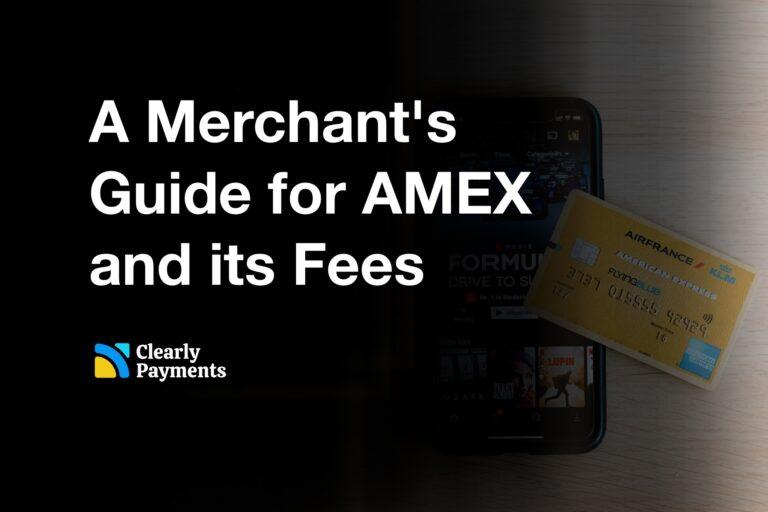In payment processing, American Express (Amex) has historically been considered a less-preferred option for merchants due to higher transaction rates and perceived complexities. However, a transformative shift is underway as Amex strategically redefines its approach, offering innovative programs like Amex OptBlue to enhance its merchant footprint.
This article goes into accepting AMEX credit cards for merchants and explores the two primary processing options available for businesses—Amex OptBlue and Amex Direct—and provides a historical perspective on the evolution of American Express.
A Brief History of American Express
Founded in 1850 as an express mail business, American Express evolved into a financial services company over the history of payment processing. Recognizing the need for a reliable and universal form of payment, Amex introduced its first charge card in 1958, paving the way for its entry into the credit card market.
Over the years, American Express has built a reputation for offering premium services, but its journey in gaining widespread acceptance among merchants has been marked by challenges.
The Evolution of AMEX Credit Card Processing
In credit card acceptance, the dominance of Visa and Mastercard is unquestionable. However, American Express (Amex) has carved out a significant presence, particularly in specific sectors, marking a distinctive evolution in the world of payment processing.
Visa has 52.6% of the market share, followed by Mastercard with 24.13%. American Express has 19.78% share. The rest of the credit card companies have a market share in single digits combined.
In the realm of credit card transaction volume in the United States and Canada, the market is largely dominated by Visa and Mastercard, collectively holding a substantial 76.73% share. Visa, with a commanding 52.6% of the market, stands as the frontrunner, followed by Mastercard at 24.13%. Notably, American Express claims a noteworthy 19.78% share, positioning itself as a formidable contender. Discover captures 3.87% of the market, while store cards and other credit providers collectively make up 0.45%. This breakdown underscores the diversity within the credit card landscape, with American Express playing a significant role and cementing its presence across various sectors despite the dominance of its counterparts.
American Express acceptance varies across industries, showcasing its strategic positioning and appeal to distinct consumer demographics:
Travel and Hospitality: Amex enjoys high acceptance in this sector, thanks to its premium travel rewards and benefits. The card’s exclusive perks make it a preferred choice for both travelers and businesses in the travel and hospitality industry.
Luxury Goods and Services: Similar to its stronghold in travel, Amex caters to high-spending consumers, establishing itself as a preferred payment option in the luxury retail and services sectors.
Restaurants: Amex often offers attractive dining rewards and partnerships, leading to higher acceptance in the restaurant industry. This strategic focus aligns with its commitment to providing unique benefits to cardholders.
General Retail: While widely accepted, Amex may not be universally embraced by all small and local retailers. Its adoption in general retail varies, and smaller businesses may opt for the more widely accepted Visa and Mastercard.
AMEX Direct: The Traditional Approach
Amex Direct, representing the traditional facet of American Express’s merchant services, maintains an exclusive and direct approach to transaction processing. Tailored for businesses with substantial financial volumes, typically processing $1 million or more per year in Amex transactions, this option provides a dedicated and personalized merchant account structure. However, the benefits of exclusivity with Amex Direct come with a trade-off – notably higher standard rates compared to alternative processors.
The exclusivity of Amex Direct is a key distinguishing feature, as American Express retains the authority to mandate a direct merchant agreement for large-scale merchants seeking to accept Amex cards. This direct relationship between Amex and the merchant ensures a more hands-on, dedicated approach to account management but is accompanied by a fee structure that tends to be higher than those offered by other credit card processors.
While the personalized nature of Amex Direct can be advantageous for businesses with specific requirements or complex financial arrangements, the decision to opt for this traditional model necessitates careful consideration of the associated costs. The higher standard rates imposed by Amex Direct can impact a business’s overall profitability, especially when compared to the more flexible fee structures available through the Amex OptBlue program.
Controversies of the AMEX OptBlue Rollout
The OptBlue program aimed to simplify the process of accepting Amex cards by allowing other merchant account providers to handle Amex transactions. This shift in strategy intended to make Amex acceptance more attractive to a broader spectrum of merchants. However, the success of any new initiative hinges on effective communication, and in this case, the rollout was criticized for not achieving the desired level of transparency.
One notable challenge was the absence of widespread advertising and education about the OptBlue program. Many merchants, unaware of the changes and potential advantages, found themselves in a vulnerable position. This lack of comprehensive communication created an opportunity for processors to exploit the situation.
Processors, seeking to maximize their profits, took advantage of the ambiguity surrounding the new rates introduced by the Amex OptBlue program. In some instances, processors added significant markups to the purportedly lower Amex rates, nullifying the cost benefits that merchants were anticipating. This unexpected turn of events left many businesses in the dark about the overall cost implications of accepting Amex cards under the OptBlue program.
The controversy surrounding the rollout of Amex OptBlue underscores the importance of not only introducing innovative programs but also effectively communicating the associated changes to all stakeholders. In the rapidly evolving landscape of payment processing, transparency and clear communication are paramount to ensuring that merchants can make informed decisions that align with their business objectives.
Understanding AMEX Fees for Merchants
The American Express (Amex) and Visa merchant fee structures necessitate careful consideration for businesses. Visa generally imposes lower interchange fees, ranging from 1.15% plus 5 cents to 2.40% plus 10 cents, in contrast to Amex’s higher fees ranging from 1.43% plus 10 cents to 3.30% plus 10 cents. This difference results in an approximate 1% increase in total fees for merchants accepting Amex, prompting a closer look at the factors contributing to this fee disparity.
Amex’s higher fees can be attributed to its strategic focus on affluent cardholders, justifying elevated fees as a trade-off for exclusive access to this high-spending demographic. Additionally, Amex’s renowned and generous reward programs contribute to these fees, with a portion of the costs being funded by merchant fees. The more closed network of Amex, leveraging exclusivity, further establishes the rationale for higher fees.
For businesses contemplating whether to accept Amex, strategic considerations come into play. Understanding your target customers is paramount—if they frequently use Amex, the higher fees might be justifiable for the potential customer base. Additionally, the impact of fees varies based on transaction amounts; smaller transactions are more significantly affected, while the relevance diminishes with higher average transaction amounts. Assessing the competitive landscape is also crucial—if competitors accept Amex, abstaining might put your business at a disadvantage.
Final Thoughts
As American Express continues to evolve its approach to merchant acceptance, businesses now have a choice between the inclusive Amex OptBlue and the traditional Amex Direct. Navigating this complex terrain requires a nuanced understanding of available options, implications for merchant operations, and potential challenges posed by rate structures.
In conclusion, staying informed and adaptable is crucial for merchants looking to optimize their strategies and cater to the diverse preferences of their customer base. With a rich history spanning over a century, American Express continues to shape the landscape of payment processing, and merchants should leverage this knowledge to make informed decisions in an ever-changing industry.




